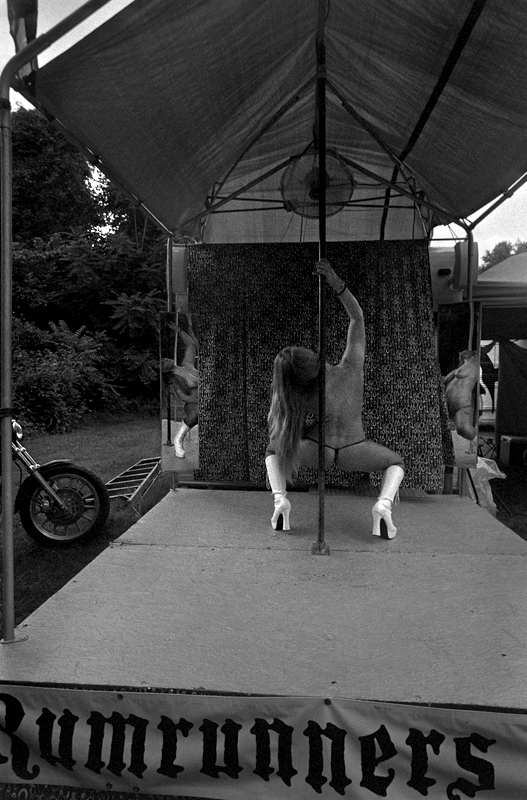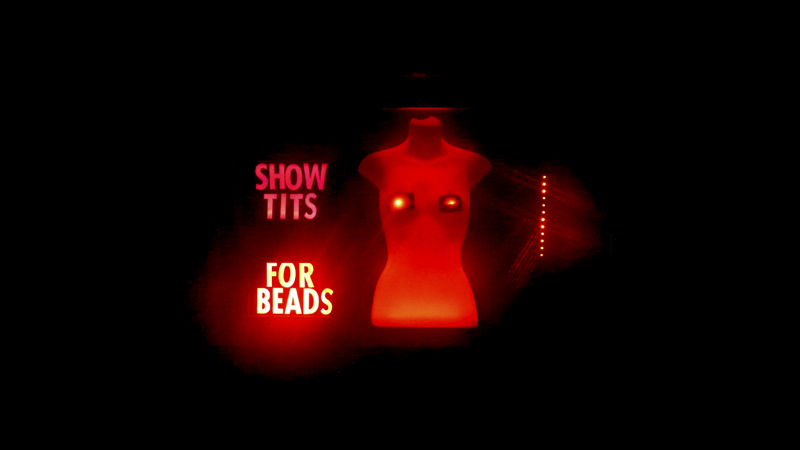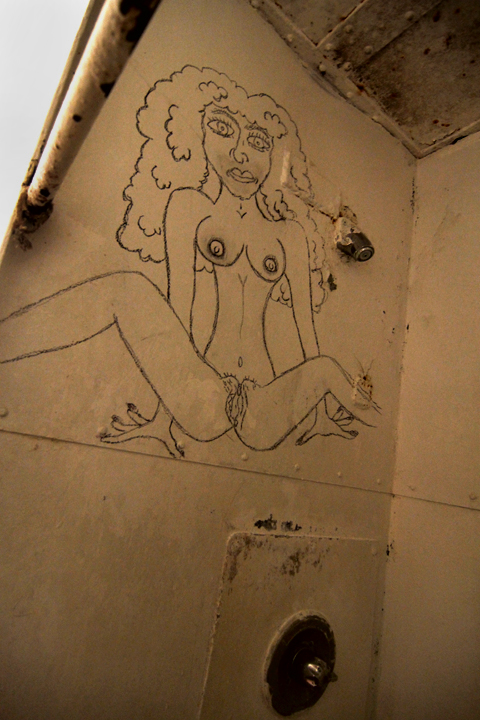The Madison County Stories exhibit was taken down last week at the Madison County Arts Council. I’ve spoken of the exhibit in previous posts so I won’t repeat myself here. But the Project did raise questions that go to the heart of Art and Documentary Expression. As a Visiting Artist with Duke University, my role was twofold – to mentor the young Madison and Duke women in their efforts to document life in Madison County through photography, and to continue my own long-term documentation of evolution and change in the county.
When hanging the exhibit at Duke University last fall, the question of appropriateness was raised about three of my photographs I wanted to include. The images, two from a Harley motorcycle rally in Hot Springs and one from the Madison County jail in Marshall, showed women, or depictions of women, in stages of undress. I anticipated concerns about these three particular pictures, but in my mind, the photographs were legitimate views of present-day life in Madison County – no less true or believable than my photographs of parties, rodeos, preachers, and farmers that were included in the show.

Biker Rally, Madison County, North Carolina, 2012.
I do think the photographs represent a side of the county that many people wish didn’t exist, and would choose to ignore, hoping it might simply go away. Similarly, the photographs could be interpreted as demeaning toward women, a point difficult to argue against. One person deemed them pornographic. Another was concerned that potential funders of the project would find them distasteful and refuse future support. Others felt the pictures would upset the sensibilities of children and parents whose work was also in the exhibit.
Community values do play a role in an artist’s mind and I did not hang the photographs in either venue. The children, their parents, and the larger community were my primary concerns. Unlike a blog, where someone can choose to read it or not, the exhibit would have offered no opportunity to avoid the pictures. We live in a conservative place, and while most residents are aware of, and indulgent of, alternative behaviors, they don’t want to be reminded or associated with it. Are the pictures pornographic? I don’t think so. Raw? Yes. Difficult for some people to look at? Yes.

Biker Rally, Madison County, North Carolina, 2012.

In the Old Madison County Jail, Marshall North Carolina, 2011.
Documentary expression – photography, film, sound - is rooted in reality, a representation of the world around us, and oftentimes that reality can be hard to look at. But what is a documentarian's, or artist’s, purpose? Is it to satisfy existing perceptions or offer new ways of seeing? Should it follow the safe and predictable or risk displeasure and controversy? Is it to challenge, or reinforce, the status quo? These are always difficult and palpable questions – made more so when dealing with the lives of real people in one’s home community. Many factors influence the decision to show, or not show, particular images. But if one goal is a truthful and complete portrayal of place, how does one choose to leave some things out?

